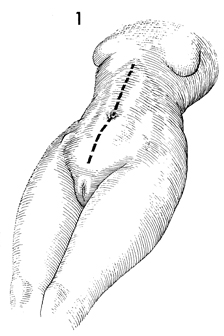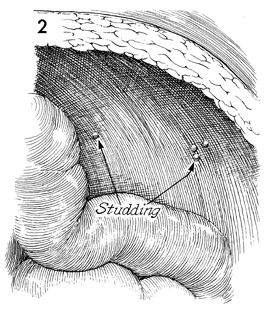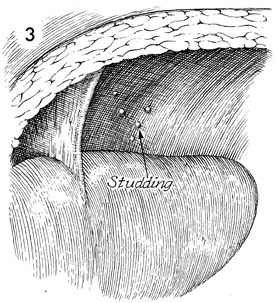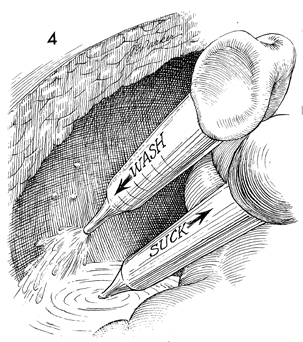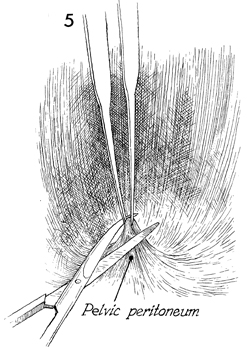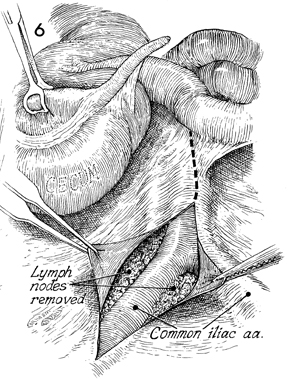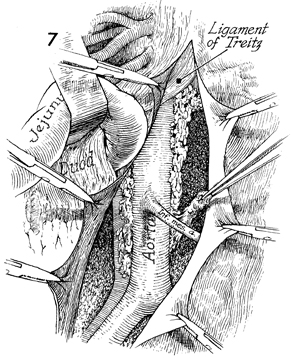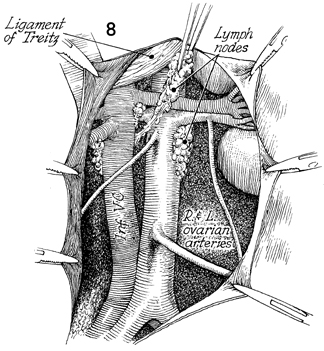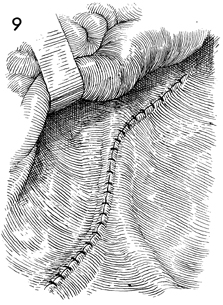|
||||||||||||||
Malignant
Disease: Staging
of Gynecologic Application
of Vaginal Application
of Uterine Afterloading Applicators Abdominal
Injection of Chromic Phosphate Radical
Vulvectomy Reconstruction
of the Transverse
Rectus Colonic
"J" Pouch Rectal Ileocolic Continent Urostomy (Miami Pouch) Construction
of Neoanus Skin-Stretching
System Versus Skin Grafting Gastric
Pelvic Flap for Control
of Hemorrhage in Gynecologic Surgery Repair
of the Punctured Ligation
of a Lacerated Hemorrhage
Control in Presacral
Space What
Not to Do in Case of Pelvic Hemorrhage |
Staging of Gynecologic Oncology Patients With Exploratory Laparotomy Modern gynecologic oncology demands accurate staging of cancer patients
in order to determine the most effective method of treatment. The noninvasive
techniques formerly required for staging are being expanded to include
extensive exploratory laparotomy. A significant percentage of patients
may have more advanced disease than was noted with noninvasive clinical
staging procedures. Surgical staging as described in this section is of particular value
in ovarian and endometrial carcinoma. Its role in epidermoid carcinoma
of the cervix remains debatable at this time. The debate is not whether
additional information can be gained; it can. The question is whether
the overall end results warrant the additional morbidity associated
with total pelvic and aortic irradiation following this type of surgical
staging. Since it is particularly important for the surgeon to search
under the diaphragm and to explore the aorta up to the level of the
renal vessels, the Pfannenstiel incision is not advised. The purpose of the operation is to gain detailed knowledge of the extent of metastasis of the pelvic malignancy. Physiologic Changes. The most significant physiologic change is adhesion formation secondary to the procedure. This has an adverse effect if one contemplates total pelvic and aortic irradiation or intraperitoneal therapy. The adhesions fix the intra-abdominal structures, such as the bowel, thereby giving them maximum irradiation. Adhesions form pockets and block diffusion of intraperitoneal drugs to their targets. Points of Caution. It is difficult to perform this
procedure through a lower transverse incision because adequate exposure
to the upper abdomen is compromised. To adequately expose the renal vessels, the ligament of Treitz and the third portion of the duodenum frequently require mobilization. Technique
|
|||||||||||||
Copyright - all rights reserved / Clifford R. Wheeless,
Jr., M.D. and Marcella L. Roenneburg, M.D.
All contents of this web site are copywrite protected.

